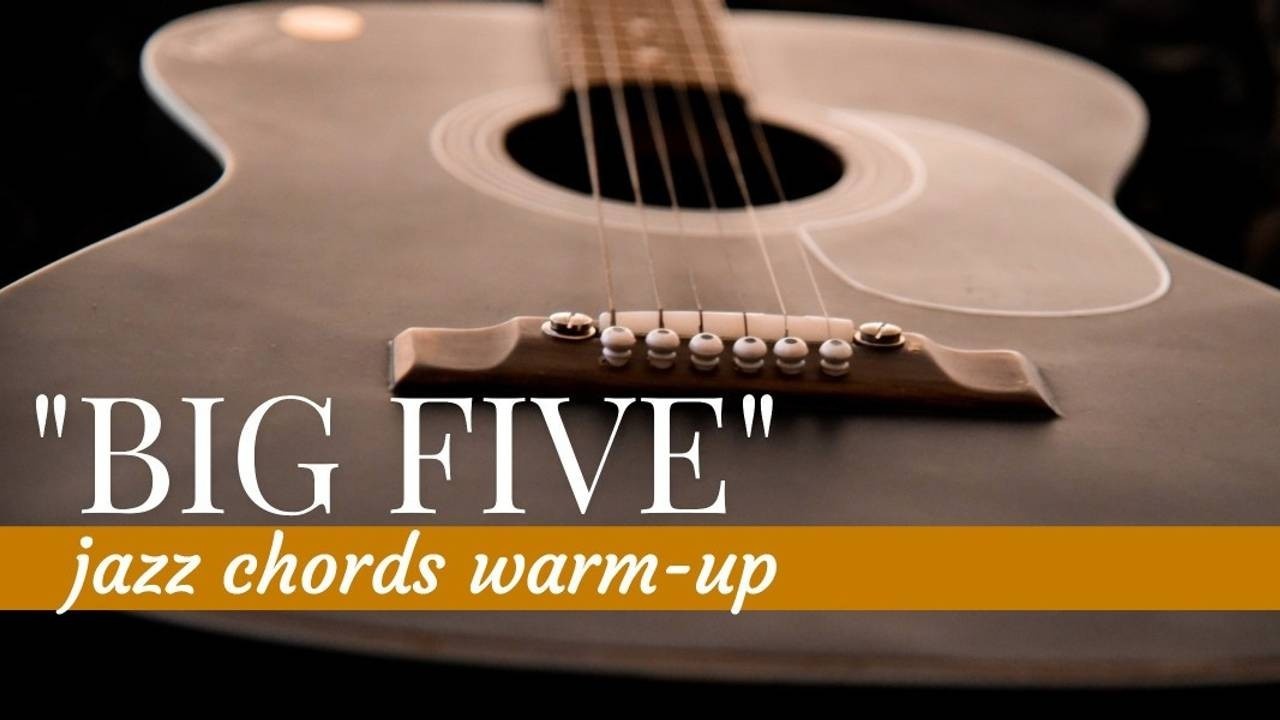
Big Five: Jazz Guitar Chords Warm-Up
Dec 02, 2014Here's a simple jazz guitar chords warm-up that I personally use almost everyday to get my fingers ready for each practice session.
The best part? It uses chords you likely already know!
Download your "Big Five Chord Shapes Exercise" PDF
Join our Community here.
Big Five Warm-Up: Video Lesson
Here's a video explaining some steps for beginning, intermediate and advanced players:
Big Five Warm-Up Explained
The PDF above depicts five different ways of playing the diatonic 7th chords in the key of C major. Count 'em up, and there's 35 chords in total!
Each staff in the PDF represents a different voicing type. They are as follows:
1. Drop-2 in root position on strings 5-4-3-2

2. Drop-2 in first inversion on strings 4-3-2-1


3. Drop-3 root position on strings 5-3-2-1


4. Drop-3 in second inversion on strings 6-4-3-2


5. Drop-2 in second inversion on strings 6-5-4-3


What Are Jazz Guitar Inversions?
Inversions... like a handstand? Not quite! Simply put, we can play chords with a different "order" (from low to high) of the notes it contains.
For instance, a C major triad contains the notes C, E and G. We can play (low to high) C-E-G or E-G-C or G-C-E.
If we wrote this in relative terms, with numbers, we could rewrite the above like this: 1-3-5 or 3-5-1 or 5-1-3.
We use term inversion when the chord's root is NOT played as the lowest note of the chord. The C in the example above is the root (ie "the one" sometimes called la fondamentale in French).
Thus:
A chord in first inversion means:
We're playing it so that the lowest note in the voicing is the 3rd of the chord.
A chord in second inversion means:
We're playing it so that lowest note in the voicing is the 5th of the chord.
Keep in mind however, that since we're still all playing the same notes, the chord name (or symbol) does not change.
(Related: No Nonsense Guide To Jazz Harmony)
Going Further: Some Suggestions
Too easy? If you just played through the page and went "Yeah... what now?!", it means it's too easy. We can make it more difficult, don't worry.
Maybe you already knew this exercise and the associated voicings. Here's some more stuff to consider:
- Try in C melodic minor: change all the E's to Eb's -- play the page again.
- In C harmonic minor: all E's and A's become flat -- play the entire page again.
- Keep the same voicings but play in other keys. For example: in F major, the first line would give the chords: C7 Dm7 Em7(b5) Fmaj7 Gm7 Am7 Bbmaj7 ... because all we did was make all the B notes B flat.
- String transference: try to play the second and third staves on a different set of strings (or changing string sets along the way.) This is hard and worth it! :-)
- Even harder: using extensions! For each chord, replace the root for the ninth (whenever physically possible). See if you can add 13th or even 11th on some chords.
Remember, as a pro jazzer, your teacher (that's me!) is still using this very same page as a reference. You can go beyond what's printed here and come up with hundreds of interesting variations.









